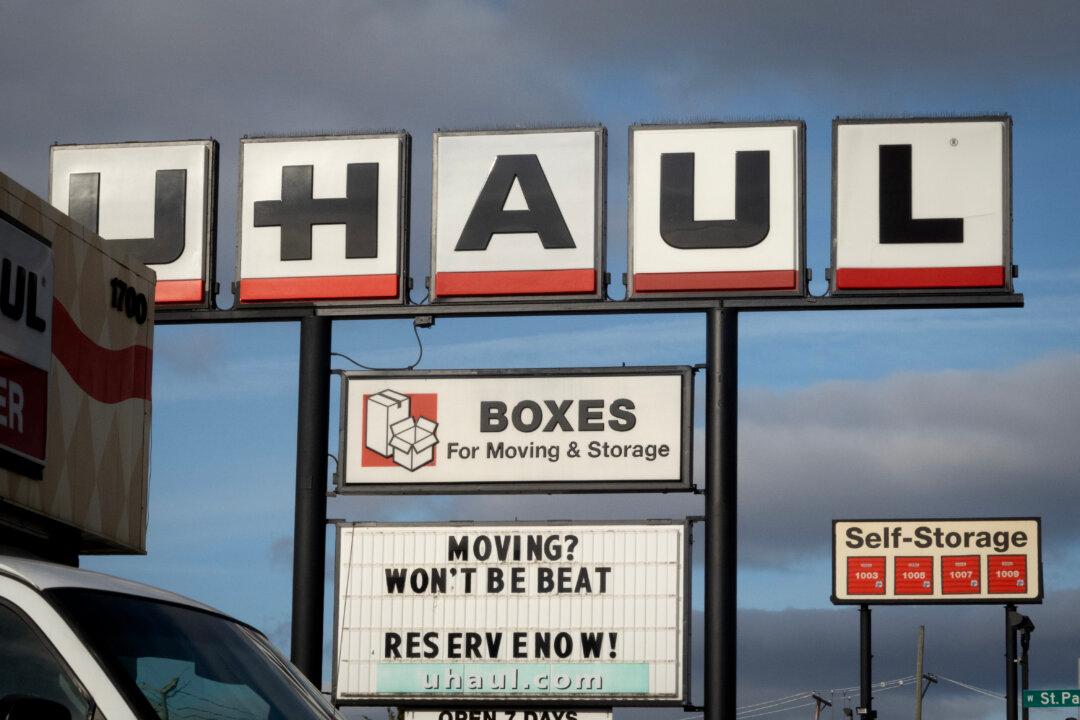Three and a half years after the COVID-19 pandemic prompted the sudden embrace of remote work, America’s urban offices remain half-empty. That’s good news for most employees, bad news for office landlords, and a challenge for U.S. cities facing a new era of downtown lethargy.
Compared to the pre-pandemic era, offices are still only 49.3 percent utilized, according to a weekly survey of 10 metropolitan areas by Kastle Systems, which tracks card-swipe data for office buildings.
Another measure of place-of-business barrenness comes from Moody’s Analytics, which calculates that vacancy in the U.S. office sector hit an all-time high of 20.1 percent this summer.
Office utilization measures how often people are physically going to the office, whereas vacancy refers to the percentage of office space that isn’t rented out. The two metrics have an indirect relationship due to the long-term nature of most office leases. Office tenants may continue paying rent for many years even though their spaces are mostly deserted. But employers typically try to shed underutilized space by downsizing or eliminating their office requirements when their leases expire.
Many employers would like to bring workers back to their cubicles full-time. Increasingly, this seems unlikely to happen, as return-to-office mandates have seen limited success, and hybrid work is gaining widespread acceptance. Policies that require workers to be in the office for part of the week are now overwhelmingly the most popular arrangement among large corporations. According to real estate brokerage JLL, 81 percent of Fortune 100 employees work for hybrid companies, while just 11 percent work for fully in-office employers. The average weekly attendance requirement is 3.11 days.
Around the glass-and-steel towers, activity in America’s downtowns has undergone a sharp decline as workers are no longer commuting to the office every day. Drawing on location data from smartphones, a report published this month by Urban Studies Online finds that downtown neighborhoods in North America have only recovered about 76 percent of their pre-pandemic foot traffic on average.
Half-empty workplaces, of course, are a crisis for owners of the nation’s nearly 1 million office properties. Remote work is strangling cash flow for landlords by depressing occupancy, market rents, and lease renewal rates, jeopardizing the value of office buildings. In a paper last revised in December 2023, researchers from New York University and Columbia University predicted that New York City office values would see a 49 percent plunge by 2029. Applying their model nationwide, they estimated that office values suffered a staggering $664 billion value destruction in the three-year period from 2019 to 2022.
Plummeting lease revenues at surrounding retail properties adds to the pain. These negative trends can create an “urban doom loop” in which declining real estate values cut into local tax revenue, which leads to less government spending and more taxation, prompting people to leave the city. Out-migration causes real estate values to fall further, continuing the cycle.
So far, the total meltdown in the office sector predicted by some analysts hasn’t materialized. But the grim outlook for office values, particularly for lower-quality buildings, threatens future turbulence in the market. Many banks and capital market lenders have rolled over troubled commercial real estate loans to avoid recognizing losses, a practice known as “extend and pretend.” This has helped the industry buy time and avert a major crash, but it’s unclear how long lenders can keep working with building owners to postpone a wave of defaults.
As high vacancy rates persist, more landlords and policymakers are turning to the possibility of converting underutilized office buildings into residential properties. The Biden administration launched a multi-agency initiative last fall designed to encourage commercial-to-housing conversions, which it says will help address the nation’s shortage of affordable homes. A number of city governments from New York to Chicago have developed their own programs to incentivize conversion projects through such means as public subsidies and tax breaks.
Conversions sound promising in theory, but in reality, most office buildings aren’t physically or structurally suitable as dwelling places. Even when a property is viable and zoning restrictions allow for it, most conversion projects don’t pencil for developers because they’re too costly. Conversion projects are likely to remain a niche interest for some time, although real estate software company Yardi estimates that more than 1.2 billion square feet of office properties nationwide could be good candidates for a second life as housing.
Mass telecommuting is one of the most fundamental changes to the way Americans work since factories gave way to cubicle farms, and businesses and authorities are still grappling with the implications. The fate of America’s downtown office buildings hangs in the balance. Even the future of big cities is up for grabs, as work becomes delocalized and professional talent disperses out of urban hubs. Only one thing seems like a reasonably safe bet: The days of commuting daily, for many, are gone for good.







